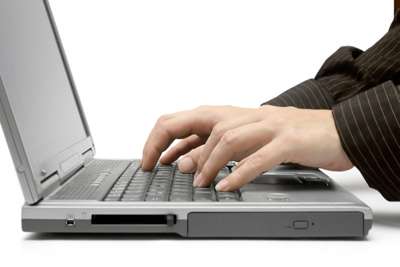
Most people wouldn't think of being rude or obnoxious when they speak to colleagues, clients or their supervisor. But those rules can fall by the wayside when we use e-mail.
The opportunities for rudeness when using e-mail are plentiful and not always easy to recognize. Most people wouldn't use foul language or derogatory terms in business communication. But what about raising one's voice? Is that possible when using e-mail?
Here, we'll discuss some business writing rules and tips for practicing e-mail etiquette.
People are busy, so:
- Use the subject line. You might be tempted to bypass this part of the e-mail, but just remember: everyone is in a hurry, including the recipient of your e-mail. That person will appreciate the clue the subject line provides as to the message content. It helps them prioritize and organize.
- Be brief and concise. No matter how clever and entertaining a writer you might be, your message recipients will appreciate brevity and clarity. Save the puns and witty turns of phrase for after birthday cards and toasts. State the message quickly followed by clear requests or instructions for any action needed by the recipient.
- Keep it personal. Routinely copying others on e-mails clogs mailboxes and can lead to the main recipient wondering why you're doing so. Unless you have a specific reason for copying someone, keep the conversation between sender and recipient.
- Reply quickly. Don't let e-mails sit around in your queue unanswered. Get back to the sender, even if it's to say you need more time to respond.
People are sensitive, so:
- Don't over-punctuate. Adding multiple punctuation marks, such as ???? or !!!! after a sentence makes it seem as though you are shouting or frustrated with the recipient. Use normal punctuation rules.
- Don't use all capitals. Using all caps MAKES IT SEEM LIKE YOU'RE SHOUTING. Shouting is rude. Use normal capitalization rules. If you need to emphasize something, write "I'd like to emphasize…"
- Read it, out loud, before you send it. While you may think you're writing exactly what you mean, it pays to read some e-mails out loud to yourself, putting yourself in the recipient's shoes, before hitting that "send" button. Once it's in writing, it's hard to take back. Also, never forget that the recipient has both a printer and "forward" button. Never write something you wouldn't want to have circulated throughout the company or even beyond.
- Don't write when you're angry. Perhaps one of the most common etiquette rules to break is firing off an e-mail to someone when you're angry, either at them or a situation. See "Read it out loud" above. You can't take it back once you "flame" someone, and it can come back to haunt you.
Not everyone is as hip as you are, so:
- Keep the symbols to a minimum. Using "smiles" is a trendy way to communicate mood and meaning. But do you know the difference between a sarcastic smile and a mischievous one? And even if you're sure you do, can you be sure your recipient does? It's easy to see the potential to unintentionally offend someone using these symbols. Avoid using them.
- Minimize abbreviated phrases. Using abbreviations such as IMHO (in my humble opinion). FWIW (for what it's worth) and ROTFL (rolling on the floor laughing) can frustrate and confuse the recipient.
E-mail is like as a business letter. Ignoring basic rules can show disrespect for the recipient. Don't let informality spoil the recipient's opinion of you.


